For decades, these historic theaters were the first choice for Los Angeles moviegoers. Many of them are now spectacular live music and special event venues, while one continues to serve as a popular movie house. Read more about how these theaters played starring roles in the very movies shown on their screens.
The Mayan
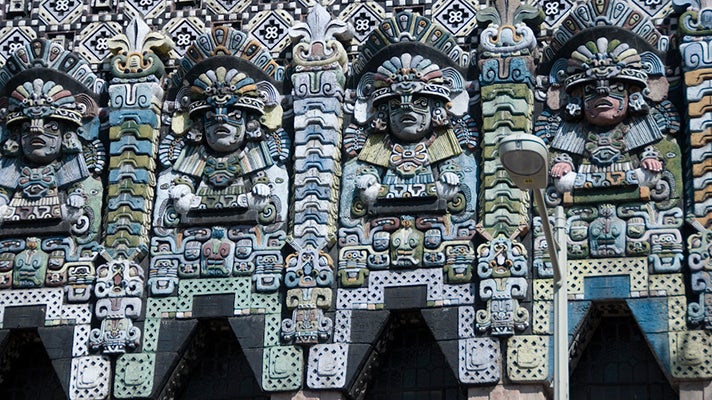
Opened as a movie palace in 1927, the spectacular Mayan Theatre was designed by Stiles O. Clements, who also designed the Pellissier Building, home of the Wiltern Theatre. Artist Francisco Cornejo created the Mayan and Mexican-themed architectural details. The auditorium’s stunning ceiling piece is modeled after an Aztec calendar stone, while the sacred Quetzal bird and other ancient symbols can be seen as ornamentation throughout the venue. The Mayan now hosts special events, music and DJ performances.
Watch: In the 1992 film The Bodyguard, Kevin Costner is hired to protect Whitney Houston from a crazed stalker. Houston’s character defies the threats and performs a concert in scenes that were filmed at the Mayan.
TCL Chinese Theatre
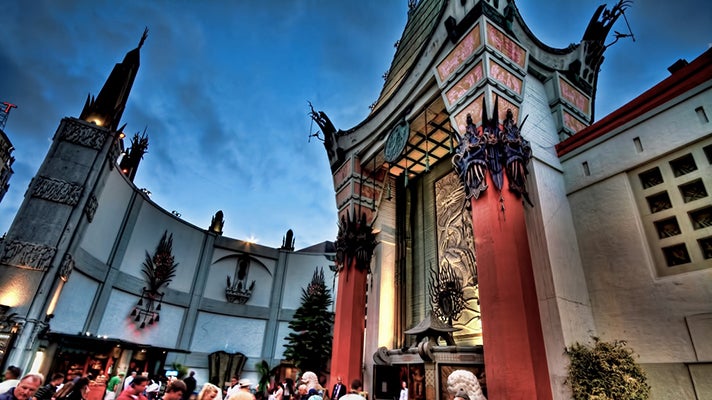
Thousands of people lined Hollywood Boulevard for the grand opening of TCL Chinese Theatre, then known as Grauman's Chinese Theatre, on May 18, 1927. The film being premiered that night was Cecil B. DeMille's The King of Kings, which was preceded by a live prologue devised by owner Sid Grauman. The theatre opened to the public the following day, May 19th. Besides its Chinese design, the theatre’s most distinct feature is the famous Forecourt to the Stars, with nearly 200 celebrity handprints, footprints, and autographs immortalized in the concrete. From Marilyn Monroe to Tom Hanks, Betty Grable’s legs to Jimmy Durante’s nose, Sid Grauman helped Hollywood leave its impression not only on Los Angeles, but the world.
Watch: At the climax of Mel Brooks’ 1974 comedy classic Blazing Saddles, Cleavon Little has a final showdown with Harvey Korman in the Forecourt to the Stars.
The Wiltern
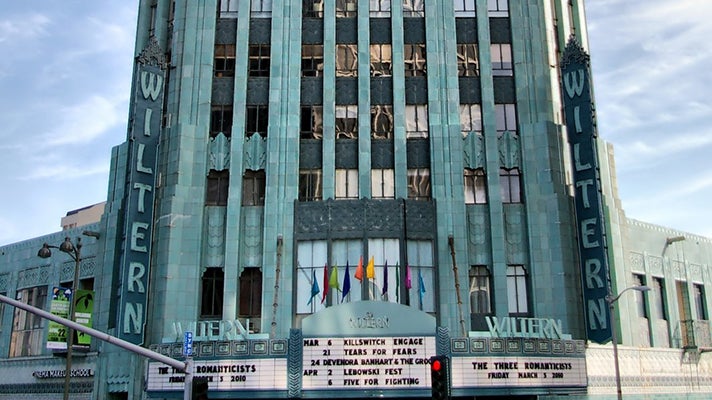
Originally built in 1931, the Wiltern is located near Koreatown at the corner of Wilshire Blvd. and Western Ave., directly across from the Wilshire/Western station of the Metro Rail Purple Line. Designed by architect Stiles O. Clements (who also designed the Mayan and the El Capitan), the Wiltern and the adjacent 12-story Pellissier Building are considered among the finest examples of Art Deco architecture in the country. The Wiltern’s interior was designed by G. Albert Lansburgh, who also designed the Shrine Auditorium. Perhaps the most dramatic element of the design is the sunburst on the ceiling of the auditorium, with each ray representing its own Art Deco skyscraper - Lansburgh’s vision of Wilshire Blvd. Both the Wiltern Theatre and the Pellissier Building have been named to the National Register of Historic Places and declared a Los Angeles Historic-Cultural Monument by the City of Los Angeles.
Watch: In Joel and Ethan Coen's 1991 film Barton Fink, the Wiltern lobby stands in as the lobby of the Hotel Earle, which has the motto "A day or a lifetime." Steve Buscemi plays the desk clerk when Turturro, newly-arrived in Los Angeles, checks into the Earle.
El Rey Theatre
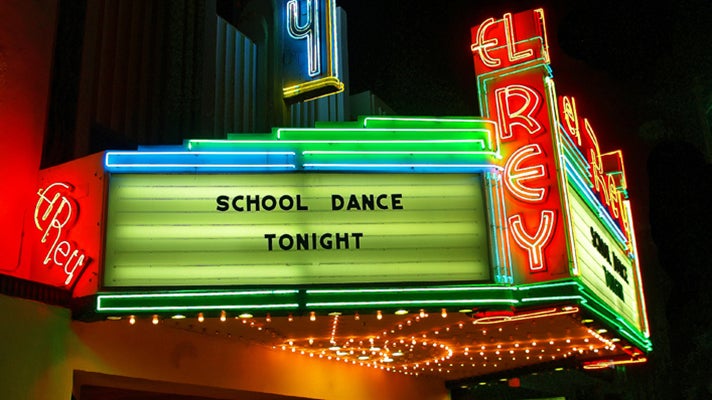
First opened as a movie house in 1936, the El Rey Theatre was designed by Clifford A. Balch, known for designing over twenty Art Deco movie houses around Southern California. After nearly 50 years as a first run movie theater, the Art Deco gem was converted to a live music venue in 1994. The El Rey was designated as Los Angeles Historic-Cultural Monument No. 520 on February 26, 1991.
Watch: Night of the Comet, an homage to classic B-movies of the 1950s and 60s, has become a cult classic itself since its 1984 release. The main character Reggie works at a movie theater, “played” by the El Rey.
Aero Theatre
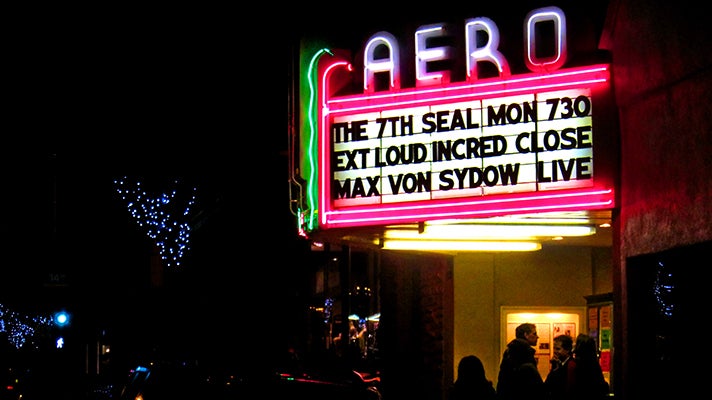
Located in the upscale Montana Avenue shopping neighborhood, the Aero Theatre was opened in 1939 by Donald Douglas to provide easily-accessible entertainment for workers at his Santa Monica aircraft plant. During World War II, the Aero was open 24 hours a day. After a $1 million renovation, the Aero is now run by American Cinematheque and features classics, film festivals and special events.
Watch: In the 2001 thriller Donnie Darko, Jake Gyllenhaal narrowly avoids an outrageous accidental death, thanks to the mysterious “Frank.” The Aero was the site for key scenes filmed in a movie theater.




